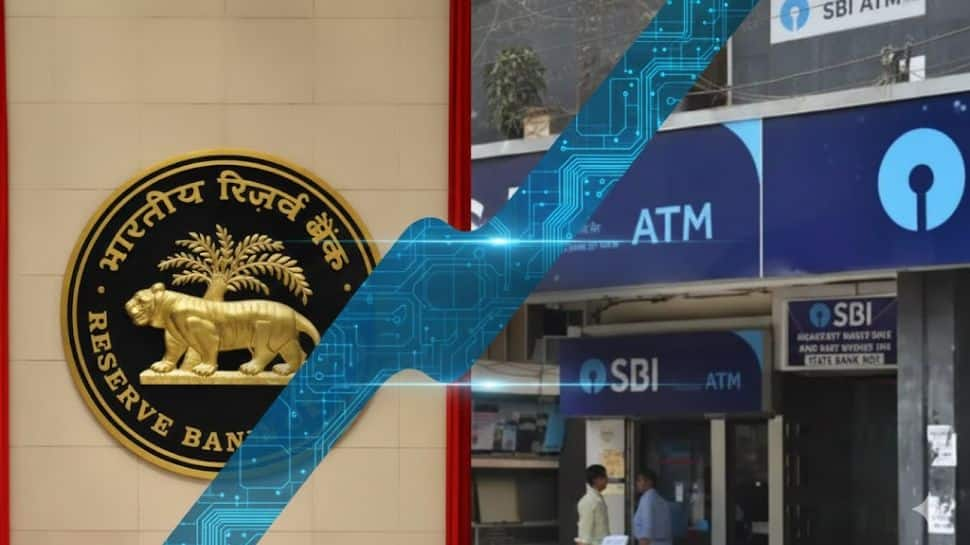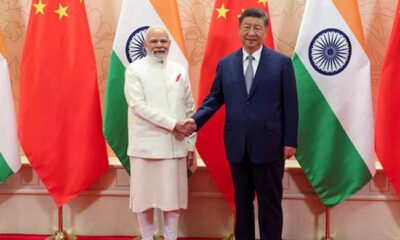Business
Digital Life Certificate From Comfort Of Home For Pensioners: How To Book Doorstep Request Through India Post; Check Direct Link
)
New Delhi: India Post Payments Bank (IPPB) has signed a memorandum of understanding (MoU) with Employees’ Provident Fund Organisation (EPFO), to provide doorstep Digital Life Certificate (DLC) services to its pensioners under the Employees’ Pension Scheme, 1995.
Under this collaboration, IPPB — a 100 per cent government-owned entity under the Department of Posts — will leverage its wide network of over 1.65 lakh post offices and more than 3 lakh postal service providers (postmen and Gramin Dak Sevaks).
Digital Life Certificate For Free
EPFO will bear the cost of issuing Digital Life Certificate entirely, making the service free for their pensioners.
They are equipped with doorstep banking devices and digital process of face authentication technology and fingerprint biometric authentication, to assist EPFO pensioners in submitting their Digital Life Certificates conveniently from their homes, eliminating the need for them to visit bank branches or EPFO offices to submit traditional paper-based certificates.
Digital Life Certificate: How To Book Doorstep Request Online
Doorstep request for Digital Life Certificate can be made through the Post Info app or website.
You can visit https://ccc.cept.gov.in/ServiceRequest/request.aspx to book India Post doorstep request for Digital Life Certificate
India Post Payments Bank introduced the doorstep service of Digital Life Certificate in 2020 for generating Jeevan Pramaan for pensioners using Aadhaar-enabled biometric authentication to reduce the turnaround time for issuance of Jeevan Pramaan.
On completion of the certificate generation process, confirmation SMS will be received by the pensioner in his mobile number and the certificate can be viewed online the next day.
Business
WH Smith to claw back £1.5m from ex-bosses after accounting scandal

WH Smith is to claw back around £1.5 million in overpaid bonuses from former bosses following an accounting blunder at the retail firm’s US arm.
The travel retail specialist confirmed last week it is being investigated by the UK’s financial watchdog after it overstated profits for its North American business by as much as £50 million due to issues with its audit process.
Carl Cowling resigned as WH Smith’s chief executive last month after a report by Deloitte confirmed the accounting problems.
The company said on Wednesday in its annual report that annual bonus payments for Mr Cowling and former finance chief Robert Moorhead have been recalculated for 2023 and 2024.
It has also recalculated the payment of long-term share bonuses from a 2021 scheme for executives.
WH Smith said it overpaid Mr Cowling £516,000 in cash and 60,182 deferred shares worth £374,933 based on the latest closing price for the firm.
It overpaid Mr Moorhead by £372,000 in cash and £272,493 worth of shares.
It said it would now seek to “claw back” both of these payments from the former bosses.
WH Smith also confirmed that it did not pay annual or long-term bonuses to Mr Cowling for the past financial year.
As a result, his total pay deal tumbled to £724,000 for the year to August 2025, from £2.71 million for the same period a year earlier.
The retailer told investors last week that it had kickstarted a remediation plan, which aims to strengthen its governance and controls, ensure processes are aligned across the group, and enact cultural change involving training and monitoring.
Its board is currently searching for a permanent group chief executive.
WH Smith is now focused solely on its 1,300 shops in global travel locations, including at airports and train stations, after selling its high street chain of about 480 shops to Hobbycraft owner Modella Capital in June.
As part of the deal, the WH Smith name is disappearing from British high streets and being replaced by brand TGJones.
The slimmed-down business reported a pre-tax profit of £108 million for the year to the end of August, excluding what it deems one-off costs.
Business
RBI Postpones Phase 2 Cheque Clearing, Modifies Presentation And Confirmation Hours

RBI Guidelines For Cheque Clearing Time: The Reserve Bank of India (RBI) said on Wednesday that it has delayed the rollout of Phase 2 of the faster cheque clearance system by banks. The new phase was earlier set to begin on January 3, 2026. The RBI also announced changes to cheque processing timings. Cheques can now be presented between 9 am and 3 pm, while banks will have time from 9 am to 7 pm to confirm or reject them.
“Implementation of phase 2 is being postponed until further notice, to allow more time to banks to streamline their processes,” according to the RBI statement. Phase 1 of the system, which was implemented earlier this year, will continue to operate as usual.
RBI Phase 2 Guidelines
Under the proposed Phase 2 guidelines, banks are required to clear or reject any cheque deposited over the counter within just three hours. This is expected to be a major relief for customers, making payments faster and more efficient once the process starts.
RBI Rolls Out Cheque Truncation System
The RBI introduced continuous clearance under the Cheque Truncation System (CTS) to speed up and simplify cheque clearing. Instead of the old batch system, cheques are now processed using digital images and electronic data. This means banks no longer need to physically transfer cheques, making the process faster and more efficient.
RBI Phase 1 Single Presentation Window
From October 4, 2025, Phase 1 brought in a single, continuous cheque presentation window during the day. Instead of waiting for fixed clearing batches, banks now scan cheques as they receive them and send the cheque images along with MICR data to the clearing house.
Once the drawee bank gets the cheque image, it checks the details and sends an approval or rejection electronically. If the bank does not respond by the end of the confirmation window, the cheque is automatically treated as approved and settled.
RBI Phase 2 Plan For Cheque Clearance
Phase 2, which was planned to start from January 3, 2026, was meant to further expedite the clearance of cheques to ensure greater convenience for bank customers. Banks would get just three hours to approve or reject a cheque after receiving its image.
If a bank failed to respond within this time, the cheque would be automatically approved and settled. This would have pushed banks to process cheques more quickly and helped customers get their money sooner. However, since phase 2 has been deferred, cheque clearing will continue under the present Phase 1 system, which does not have to follow the three-hour deadline. (With IANS Inputs)
Business
US labour pulse: US unemployment claims dip to 214,000; data points to stable layoffs – The Times of India

US unemployment benefit claims fell again last week, underscoring a labour market that remains broadly stable even as hiring momentum shows signs of cooling, according to data released by the Labor Department.Applications for jobless aid dropped by 10,000 to 214,000 for the week ended December 20, down from a revised 224,000 a week earlier, AP reported. The figure came in well below the 232,000 claims forecast by economists surveyed by FactSet. The weekly report was released a day earlier than usual due to the Christmas holiday.Initial claims are widely seen as a near real-time indicator of layoffs, and the latest reading remains within a range considered historically healthy.The data comes against a mixed backdrop for the US labour market. The government last week reported a net gain of 64,000 jobs in November, following a loss of 105,000 jobs in October. The unemployment rate rose to 4.6% in November, its highest level since 2021.October’s decline in payrolls was driven largely by a sharp fall of 162,000 federal jobs, as workers exited following fiscal year-end and administrative cutbacks under the Trump administration. Subsequent revisions also shaved 33,000 jobs off August and September employment figures.Since March, job creation has averaged about 35,000 a month, roughly half the pace seen in the year ended March, as businesses grapple with uncertainty around President Donald Trump’s tariff policies and the lingering impact of elevated interest rates following the Federal Reserve’s aggressive tightening cycle in 2022 and 2023.Earlier this month, the Fed cut its benchmark interest rate by 25 basis points for the third consecutive meeting. Fed Chair Jerome Powell said the move reflected concerns that the labour market may be weaker than headline figures suggest, adding that recent job data could be revised down by as much as 60,000.Several large companies, including UPS, General Motors, Amazon and Verizon, have announced job cuts in recent months, though such reductions often take time to be reflected in official data.The Labor Department’s report also showed that the four-week moving average of jobless claims slipped by 750 to 216,750, smoothing out week-to-week volatility. Meanwhile, continuing claims — the number of people receiving unemployment benefits — rose by 38,000 to 1.92 million for the week ended December 13.
-

 Fashion6 days ago
Fashion6 days agoIndonesia’s thrift surge fuels waste and textile industry woes
-

 Business6 days ago
Business6 days agoBP names new boss as current CEO leaves after less than two years
-

 Tech7 days ago
Tech7 days agoT-Mobile Business Internet and Phone Deals
-

 Sports6 days ago
Sports6 days agoPKF summons meeting after Pakistani player represents India in kabaddi tournament
-

 Entertainment6 days ago
Entertainment6 days agoIndia streamlines visa rules in boost for Chinese professionals
-

 Sports6 days ago
Sports6 days agoUWCL grades for all 18 teams: Leuven get A+; Barça an A-, PSG fail
-

 Business1 week ago
Business1 week agoFord to record $19.5 billion in special charges related to EV pullback
-

 Fashion1 week ago
Fashion1 week agoKering and Ardian finalise New York property deal












